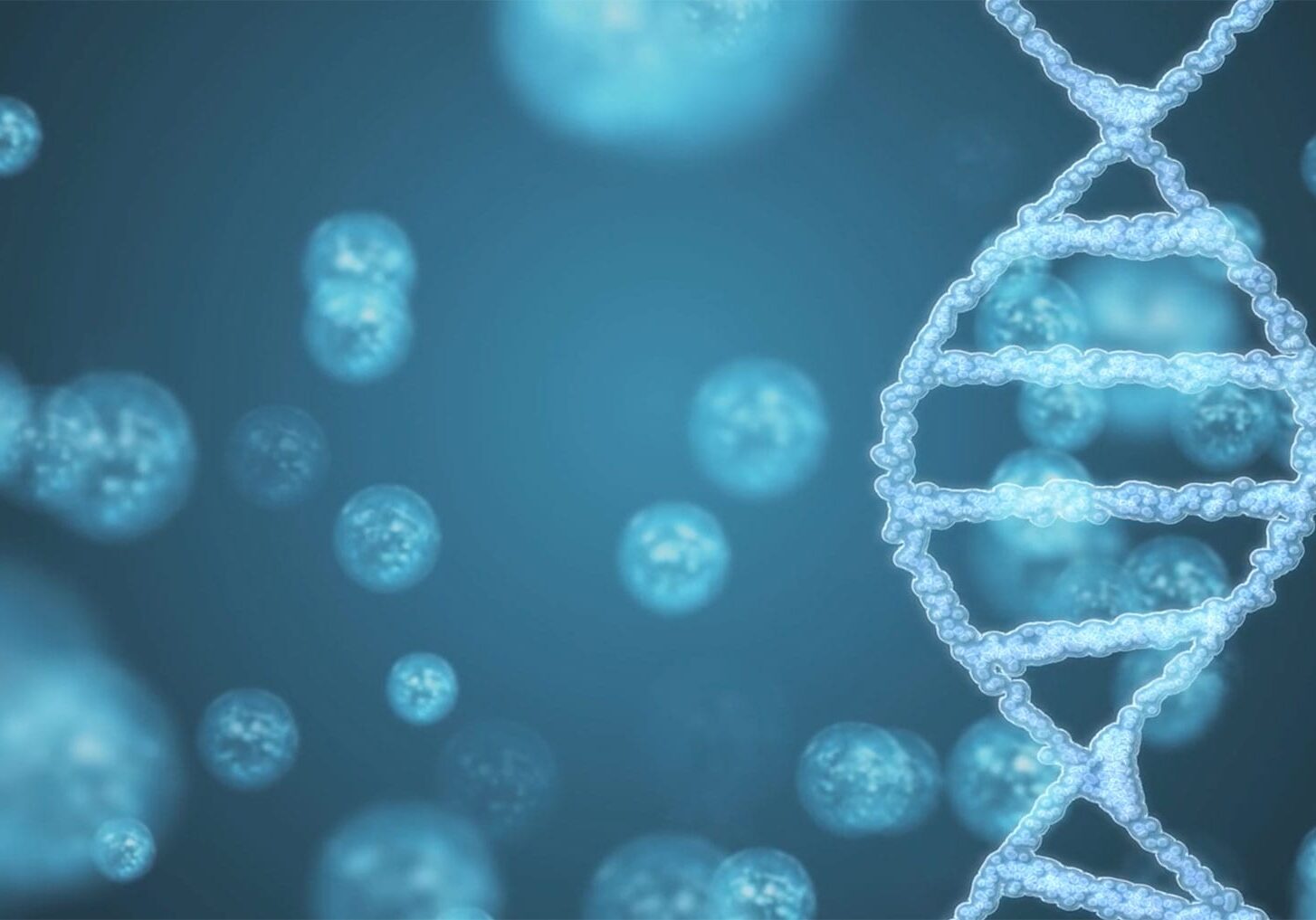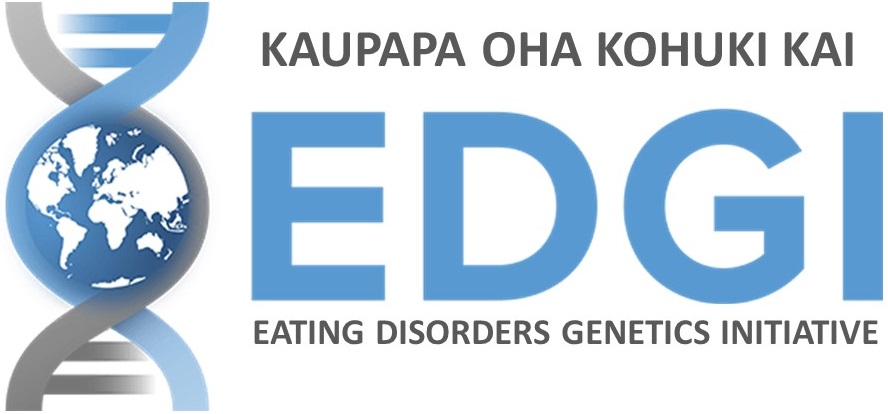Rethinking eating disorders as both psychiatric & metabolic

Authors
- Dr Jennifer Jordan, Senior Lecturer, University of Otago & Co-lead Investigator, EDGI NZ, Christchurch
- Professor Martin Kennedy, Genetics researcher, University of Otago & Co-lead Investigator, EDGI NZ, Christchurch
- Professor Cynthia Bulik, Distinguished Professor of Eating Disorders & Founding Director, University of North Carolina Center of Excellence for Eating Disorders & Principal Investigator, Eating Disorders Genetics Initiative (EDGI), North Carolina & Sweden
Introduction
Recent advances in large-scale genetic studies are encouraging us to think more broadly about the causes of the primary eating disorders—anorexia nervosa, bulimia nervosa, and binge-eating disorder (BED). Historically, these illnesses have primarily been conceptualised as “biopsychosocial” illnesses, with particular emphasis on sociocultural (societal thin ideal, childhood bullying and teasing) and personal (perfectionism, obsessionality) factors. However, recent work that included New Zealand scientists and participants and appeared in Nature Genetics (1) has shown that on a genetic level, anorexia nervosa has not only psychiatric, but also metabolic origins. These results shed light on some of the most perplexing aspects of the illness such as how individuals can actually achieve and maintain such low body mass indices and why, even after successful therapeutic renourishment, their bodies tend to descend back to dangerously low weights. An upcoming extension of that work, the Eating Disorders Genetics Initiative (EDGI), also being conducted in New Zealand and other sites around the world, will expand the science to explore similar questions about the genetic underpinnings of all three eating disorders.
Anorexia nervosa is a serious illness characterised by severe restriction of food intake and/or increased energy expenditure resulting in a dangerously low body weight, an intense fear of gaining weight, and a lack of recognition of the seriousness of the low body weight or overvaluation of weight and shape on self-worth. Anorexia affects between 1-4% of the population (2, 3) with a female to male ratio of 10:1. Outcome is poor, particularly in adults (4) with only 30% achieving remission in the long term (5). With the exception of the recent rise in opiate-related deaths, anorexia nervosa has the highest mortality rate of all psychiatric disorders, with a standardised mortality ratio of 5.35, primarily related to medical consequences of the disorder (5) and suicide (6). Long-term medical morbidity is high and includes osteoporosis, gastrointestinal problems, and impaired fertility (7).To date no pharmacological treatments exist that target its core features, in part because we have had limited understanding of its neurobiology.
Bulimia nervosa affects ~2% of the population, more commonly affects women and is characterised by binge eating coupled with compensatory behaviours (e.g., self-induced vomiting, misuse of laxatives). Individuals with bulimia are also at elevated risk for death and suicide (8). Around 50% of individuals with bulimia recover at 5-10 years follow-up (9) with cognitive-behavioral therapy being the evidence-based treatment of choice.
BED is the most common eating disorder, with a lifetime prevalence between 1-4% and a more balanced female to male ratio (~2:1)(10). It is characterised by recurrent binge eating (in the absence of compensatory behaviours) and often co-occurs with obesity, metabolic syndrome, and depression (11).
Although eating disorders are most common in women, they affect a diverse range of people including males, gender diverse people, and ethnic minorities, although these diverse groups are less likely to be seen in treating services, in part due to under-detection. Age of onset is typically in adolescence and young adulthood, but can occur from childhood through middle age. Eating disorders typically persist for between 5-7 years even when treated, with better outcomes when the symptoms are promptly and accurately diagnosed and referred for specialised treatment (12).
The eating disorders do not “breed true” with considerable overlap in symptoms and frequent “crossover” among eating disorder diagnoses, for example, up to 50% of those with bulimia nervosa have a prior history of anorexia nervosa (4, 13). In addition, individuals with eating disorders often present with co-occurring psychiatric illnesses including depression, anxiety disorders, obsessive-compulsive disorder, and substance use disorders (14).
Genetic studies of anorexia nervosa
Through decades of family and twin studies, we know that eating disorders run in families and that the observed heritability is due to genetic factors (15). With the emergence of increasingly sophisticated approaches to the study of genetics, such as genome-wide association studies (GWAS), we have been able to make considerable advances in understanding the underlying genetic architecture of complex traits like eating disorders. The field started its exploration with anorexia nervosa, given its severity and recognisability as a disease entity. Like other psychiatric illnesses, we knew when embarking on the research that anorexia nervosa is a classic complex trait – meaning that it will be influenced by hundreds of genes each contributing a small effect, potentially interacting with each other as well as with environmental factors. Thus, delineating the genetic architecture of a trait like anorexia nervosa was not going to be an easy task and would require very large sample sizes in order to detect these small genetic effects. In a GWAS, you place markers across complete sets of DNA (genomes) of many people with the condition compared to unaffected controls to identify specific differences in the genome. Extremely large samples (tens of thousands of cases) are required to fully examine genetics of a complex disorder such as anorexia.
The ANGI study
The Anorexia Nervosa Genetics Initiative (ANGI) was an international collaboration of more than 200 researchers and clinicians who engaged with eating disorder communities within each country to recruit the largest ever sample of those with AN to contribute DNA for GWAS analyses. New Zealand contributed 555 of almost 17,000 participants with lifetime anorexia nervosa, to be compared with the dataset of over 55,000 controls from 17 countries across North America, Europe, and Australasia.
The key findings of the ANGI study were published last year in Nature Genetics (1). Eight genetic variants were found to be significantly associated with anorexia nervosa. In addition to these specific variants, many other genetic factors associated with anorexia nervosa were found to overlap with genetic factors that influence:
1) risk of other psychiatric disorders such as obsessive-compulsive disorder, depression, anxiety, and schizophrenia;
2) physical activity levels;
3) metabolic traits (such as insulin and lipid levels);
4) anthropometric (body measurement) traits, such as BMI, fat mass, hip circumference and so on.
These associations are observed at the genetic level, which essentially means they exist from birth, before many developmental and environmental factors have come into play.
What are the implications of the ANGI findings?
First, the findings confirm what we have observed clinically for decades, namely that anorexia nervosa often co-occurs with an array of other psychiatric illnesses such as obsessive-compulsive disorder, depression, and anxiety. But, these results explain that that co-occurrence is likely due to shared genetic factors across the disorders.
Second, rather than viewing anorexia as a psychiatric disorder with metabolic consequences, the ANGI results tell us that both the psychiatric and metabolic factors may be causal to the illness. These results suggest that, in effect, their physiology may be primed to cope with restriction, or even to find it reinforcing. In fact many people with anorexia nervosa report feeling better when they are starving—less anxious and less dysphoric—drastically different from people without the illness who find negative energy balance to be unpleasant and to be avoided at all costs.
These metabolic findings may also help explain why some people with anorexia nervosa really struggle to gain weight despite their best efforts. Most importantly, these findings support the importance of aiming for full weight restoration rather than aiming for, or accepting, a target weight at the lower end of the low weight range (e.g., BMI of 19). These metabolic factors may help explain why the risk of “weight relapse” is so high and highlight the importance of allowing the body the opportunity to adjust metabolically after weight restoration (16).
The ANGI results also have immediate therapeutic implications. Even after recovery, people with histories of anorexia nervosa should avoid periods of negative energy balance (eating less energy than they are expending). Clinicians have long been concerned that food restriction or weight loss for any reason (e.g., related to medical procedures or even factors unrelated to eating disorders) may act as a psychological trap leading to relapse, even long after recovery. The ANGI results suggest however, that negative energy balance may not only be a psychological trap, but may also be a metabolic trap for relapse, and remain an ongoing relapse risk factor over time.
Where to from here?
ANGI was a first step, and only dealt with one of the eating disorders. It is now time to expand our efforts to explore how genes and environment influence all of the eating disorders. In March 2020, we will launch the New Zealand arm of the Eating Disorders Genetics Initiative (EDGI study, edgi.nz), with the aim of recruiting 3500 New Zealand participants with a lifetime history of anorexia nervosa, bulimia nervosa, or binge-eating disorder for the international EDGI study. Participants will complete self-report questionnaires online and provide a saliva sample for genetic analysis. In collaboration with many other international sites, EDGI will further progress understanding by greatly increasing genetic knowledge of AN and other eating disorders, further enhancing our understanding of the biological underpinnings of eating disorders and clarifying why some individuals are more vulnerable to developing these pernicious illnesses than others. Ultimately, our goal is to use the newfound genetic knowledge to develop novel and more effective treatment approaches informed by biology that will reduce medical and psychiatric morbidity and eliminate mortality from eating disorders.
References
- Watson HJ, Yilmaz Z, Thornton LM, Hübel C, Coleman JRI, Gaspar HA, et al. Genome-wide association study identifies eight risk loci and implicates metabo-psychiatric origins for anorexia nervosa. Nat Genet. 2019.
- Hay P. Current approach to eating disorders: a clinical update. Internal Medicine Journal. 2020;50(1):24-9.
- Keski-Rahkonen A, Mustelin L. Epidemiology of eating disorders in Europe: prevalence, incidence, comorbidity, course, consequences, and risk factors. Curr Opin Psychiatry. 2016;29(6):340-5.
- Castellini G, Sauro CL, Mannucci E, Ravaldi C, Rotella CM, Faravelli C, et al. Diagnostic crossover and outcome predictors in eating disorders according to DSM-IV and DSM-V proposed criteria: A 6-year follow-up study. Psychosom Med. 2011;73(3):270-9.
- Fichter MM, Quadflieg N. Mortality in eating disorders‐results of a large prospective clinical longitudinal study. Int J Eat Disord. 2016.
- Thornton LM, Welch E, Munn‐Chernoff MA, Lichtenstein P, Bulik CM. Anorexia nervosa, major depression, and suicide attempts: shared genetic factors. Suicide and life-threatening behavior. 2016.
- Westmoreland P, Krantz MJ, Mehler PS. Medical complications of anorexia nervosa and bulimia. The American journal of medicine. 2016;129(1):30-7.
- Pisetsky EM, Thornton LM, Lichtenstein P, Pedersen NL, Bulik CM. Suicide attempts in women with eating disorders. J Abnorm Psychol. 2013;122(4):1042.
- Keski-Rahkonen A, Hoek H, Linna M, Raevuori A, Sihvola E, Bulik C, et al. Incidence and outcomes of bulimia nervosa: a nationwide population-based study. Psychol Med. 2009;39(5):823-31.
- Kessler RC, Berglund PA, Chiu WT, Deitz AC, Hudson JI, Shahly V, et al. The prevalence and correlates of binge eating disorder in the World Health Organization World Mental Health Surveys. Biol Psychiatry. 2013;73(9):904-14.
- Guerdjikova AI, Mori N, Casuto LS, McElroy SL. Update on Binge Eating Disorder. Med Clin North Am. 2019;103(4):669-80.
- Hay P, Chinn D, Forbes D, Madden S, Newton R, Sugenor L, et al. Royal Australian and New Zealand College of Psychiatrists clinical practice guidelines for the treatment of eating disorders. Aust NZ J Psychiatry. 2014;48(11):977-1008.
- Schaumberg K, Jangmo A, Thornton LM, Birgegård A, Almqvist C, Norring C, et al. Patterns of diagnostic transition in eating disorders: a longitudinal population study in Sweden. Psychol Med. 2019;49(5):819-27.
- Jordan J, Joyce PJ, Carter FA, Horn J, McIntosh VVW, Luty SE, et al. Specific and non-specific comorbidity in anorexia nervosa. Int J Eat Disord. 2008;41(1):47-56.
- Yilmaz Z, Hardaway JA, Bulik CM. Genetics and epigenetics of eating disorders. Advances in genomics and genetics. 2015;5:131.
- Bulik CM, Flatt R, Abbaspour A, Carroll I. Reconceptualizing anorexia nervosa. Psychiatry Clin Neurosci. 2019;73(9):518-25.
News
Participant Stories
Sorry, we couldn't find any posts. Please try a different search.





